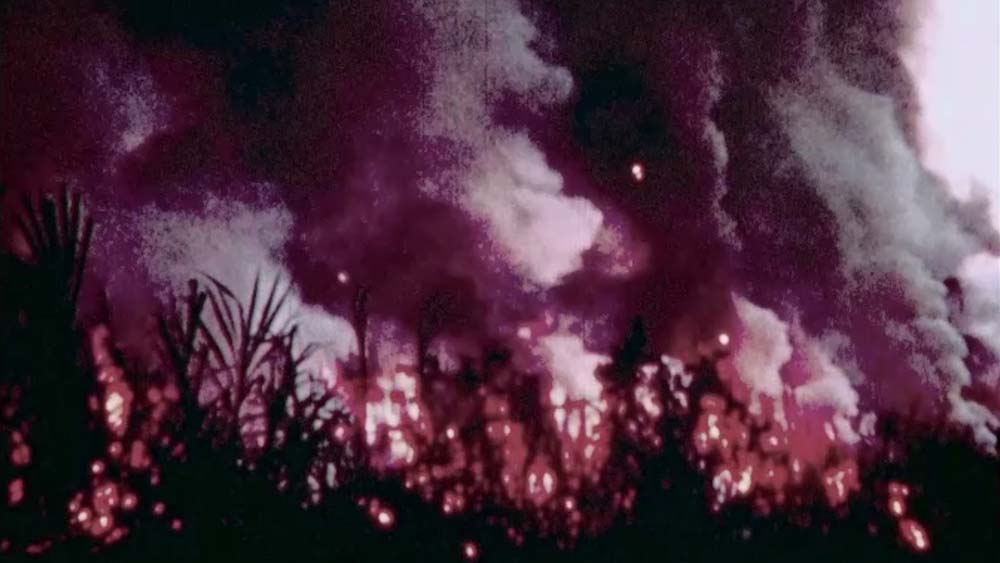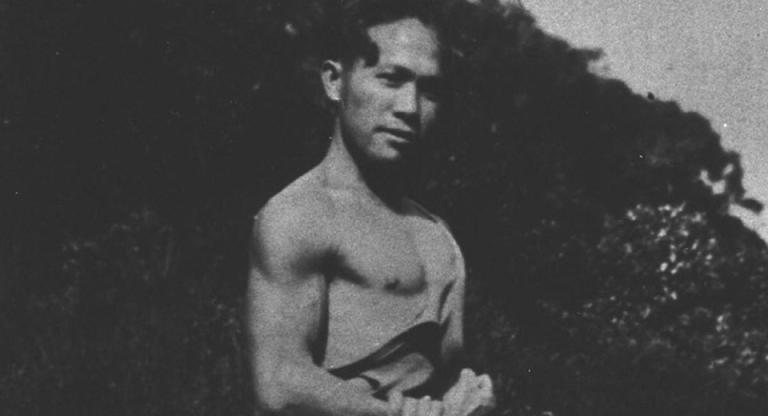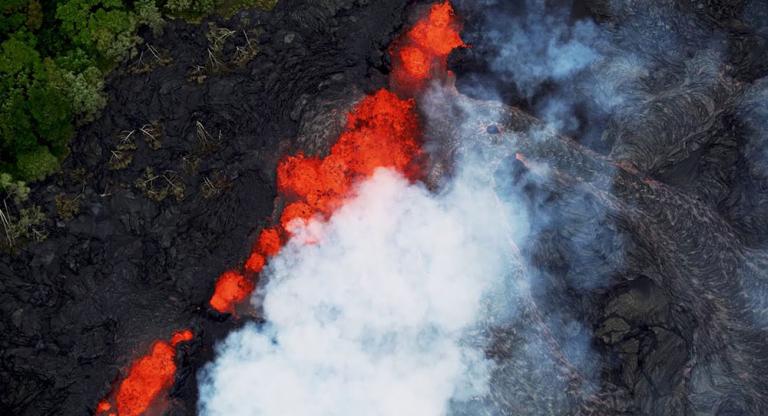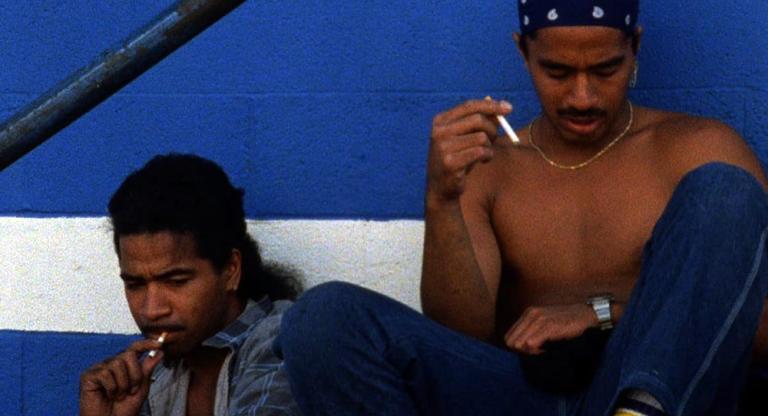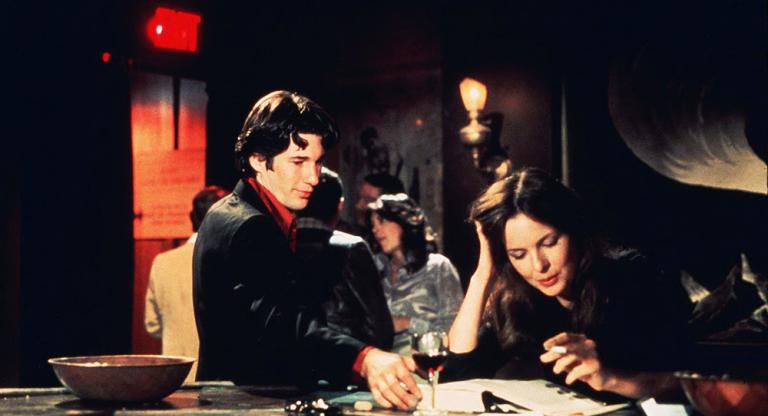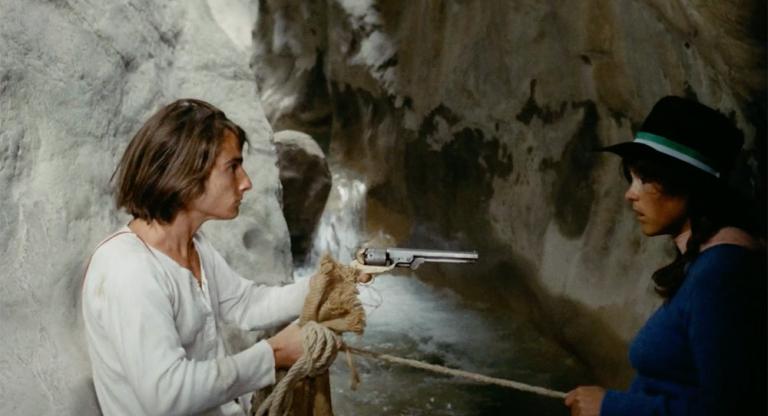It’s been a long road for Anthony Banua-Simon's Cane Fire (2020). The film, which follows four generations of the director’s family history on the Hawaiian island of Kauaʻi, was constructed over many years, and its significance has deepened even in the two years since it started playing at festivals. Cane Fire highlights the effects of the film and tourism industries in Hawaiʻi, in which the desires of visitors to the islands are prioritized ahead of the needs of locals, a situation further complicated by the pandemic.
Banua-Simon interviews a variety of participants to give a wider look at labor and life for the people of Kauaʻi’s. His film is named after Lois Weber’s Cane Fire (1934), a story of a white sugar plant owner who betrays an Indigenous woman, in which his great-grandfather is rumored to have performed as an extra. The film, now lost, was Weber’s last, and her only talkie.
The search for the lost Weber movie provided Banua-Simon with the initial framework of family, labor, and Hollywood, but what he learned even in its absence became the material for his revelatory essay film. On the occasion of Cane Fire’s theatrical release, I spoke with the filmmaker about its production, its politics, and a thread of research that has become the subject for a new work.
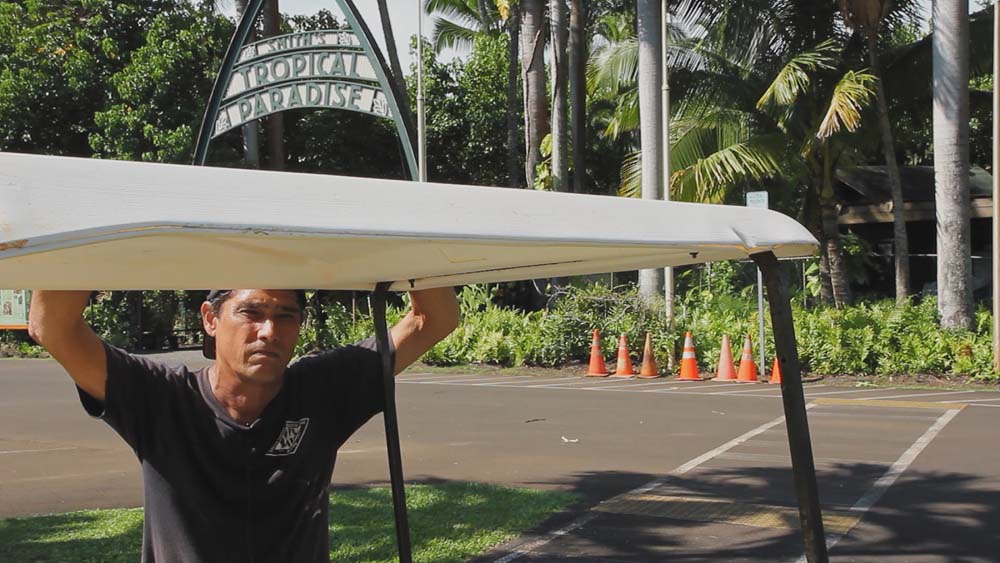
Nel Dahl: What was the moment that inspired you to make Cane Fire into a full-length film?
Anthony Banua-Simon: It started as a curiosity that just kept going after completing a short documentary [Third Shift, 2013] also about the sugar industry, centered on the now-defunct Domino Sugar Refinery in Brooklyn, NY. I knew my extended family was involved in pineapple and sugar cultivation from Puerto Rico to Hawaiʻi, but it wasn’t until this project that I actually learned more concretely about the history. I headed to Kauaʻi with a camera to visit with my great-uncle Henry, and it branched from there. It was fascinating to me that Henry was involved in all these distinct industries over the years in a single five-hundred-square-mile radius. . . . .
The producer on Third Shift, Mike Vass, has been a co-writer and co-producer on Cane Fire from the start. I would film in Kauaʻi for extended periods and share the footage with him in New York, and we’d talk about it. He and I share similar taste and politics so in a way he was the first advisor, helping me focus my ideas and keep everything coherent—despite how sprawling and layered it increasingly became. If it wasn’t for him keeping things on track, I’d still be endlessly chasing threads today. For a long time we never discussed it as a feature. We also agreed that if we’re going to be critiquing Hollywood films, then we’re going to use the films directly; we’re not going to be concerned with copyright or marketability as long as it serves the intent of the project. When we felt comfortable enough we began having rough-cut screenings with friends and collaborators in New York as well as [with] Hawaiʻi-based filmmakers.
ND: Did you start out knowing the structure of the film you wanted or did it emerge as you got deeper in?
AB-S: In regard to using media depictions of Kauaʻi as a framing device, I was most influenced by Thom Andersen’s Los Angeles Plays Itself [2003], where he would divide the Hollywood blockbusters filmed in Los Angeles into different categories—“as subject,” “as character,” “as background”—and it helped me initially break down everything in terms of what each film was communicating. It’s been apparent to me since childhood that these films were mainly tourism vehicles, especially in the era I was watching starting in the ’90s, but it wasn’t until researching further that I learned how deliberate of a PR effort these productions were—starting in the ’30s, coordinated by the sugar companies, and then afterward when the US was trying to push for statehood, militarism, and combating the labor movement all through the Office of War Information. It was intriguing and a bit horrifying to investigate an early example of “branded content” that also extended to newspaper articles, radio broadcasts, and school curricula.
In addition to the interviews and archival research, I read several historical texts. One vital source that really energized the project was The Autobiography of Protest in Hawaiʻi, an oral history from 1996 gathered by Robert H. Mast and Anne B. Mast that focuses on progressive activists in both the labor and sovereignty movements of Hawaiʻi. It also details the historical instances of solidarity between working-class residents and Native Hawaiian residents, particularly on issues of housing.
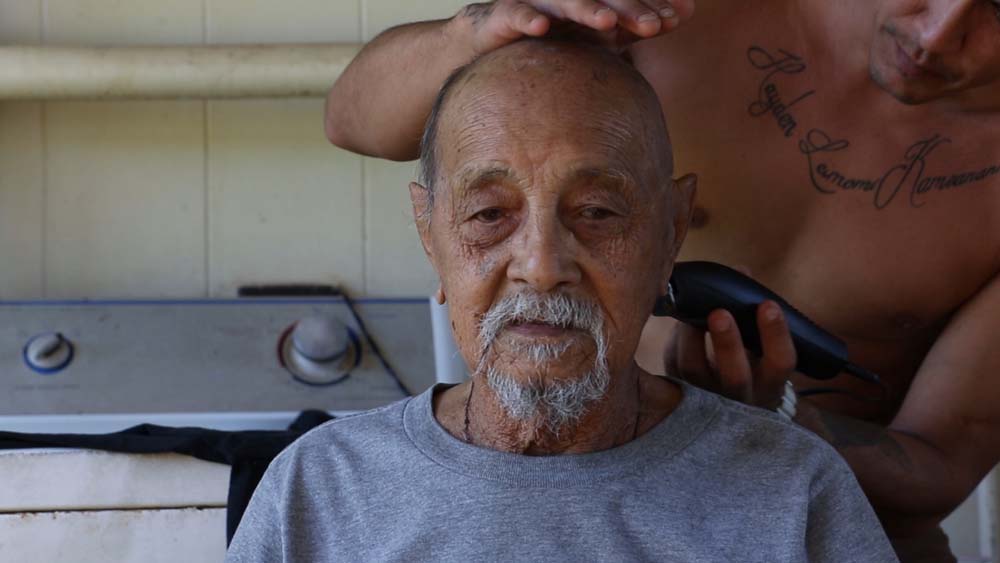
ND: When did you start making the film, and how long did it take to put together? The range of footage and number of interviews suggests an extensive effort.
AB-S: I began filming in 2014 [and continued] on and off until 2018. It’s hard to trace how long it took to put together because I had begun editing in 2015 and had many self-contained scenes, many that I still love that aren’t in the film. There were numerous people interviewed, and they certainly informed the film even if they weren’t included. An early focus that didn’t fit into this film but is developing into a companion project, The Experiment Station, is on the biotech industry’s relationship to Hawaiʻi. For several decades companies like DowDuPont, BASF, and Syngenta have used Kauaʻi specifically as an open-air testing site of lethal chemicals that have continued to impact the environment and health of residents. I’m most interested in the long-term history of how the biotech industry transitioned out of the sugar and pineapple companies.
In terms of the footage from the mass media archive—feature films, commercials, news broadcasts, social videos—I had almost too much material to work with. Every week I would search “Kauaʻi” on YouTube and see what came up. Each clip chosen was always the tip of the iceberg, representing a wealth of media that expressed the same ideology. Finding that cruise ship tourist video wasn’t a “gotcha” moment of an individual in a bad light, it was just the perfect encapsulation of countless jackasses feeling emboldened to film and upload to YouTube every week.
The archive sources that felt the most rewarding to encounter were with the Kauaʻi Historical Society. [They have] a wonderful and dedicated staff, but they often receive more material than they can catalog, and [they] actually let me go through the unsorted photos that had been donated. I found so many photos of things that I had read about or been told about that I’d never seen visual evidence of anywhere else.
ND: How has the reception been thus far? Since it’s a film about such a commonly misrepresented subject, have you felt there are things people have missed or misunderstood?
AB-S: Initially it was very disappointing to not be able to safely travel to Oʻahu for the 2020 Hawaiʻi International Film Festival premiere. But I was able to travel there earlier [this] year when doing research for The Experiment Station at the University of Hawaiʻi. I met people who had seen the film remotely, and we were able to talk about it with me in person for the first time. It was also really encouraging to meet Hawaiʻi-based filmmakers I admire who respected where I was coming from and let me share their space.
The best response is when it feels like everyone is having the same conversation afterward while bringing their own experiences into the mix—friends and family in Kauaʻi, comrades and collaborators in New York City. The film very much has a perspective, but I didn’t want to be overly didactic or prescriptive. Rather, [I wanted to] conjure the energy that was already there in my own way, which happens to be archive obsessive.
I think one thing that can get misunderstood, because I use Hollywood films as the main example of how the sugar companies and US government vied for influence, is that they are the most important focus. By that logic, the “Hollywood representation as liberation” argument can appear. In reality these films are just one of the many tactics they used and the most interesting to me as a filmmaker. Most practically, using film language was the best approach. The unredacted CIA files of spying on the ILWU [International Longshore and Warehouse Union] just didn’t translate as well to film.
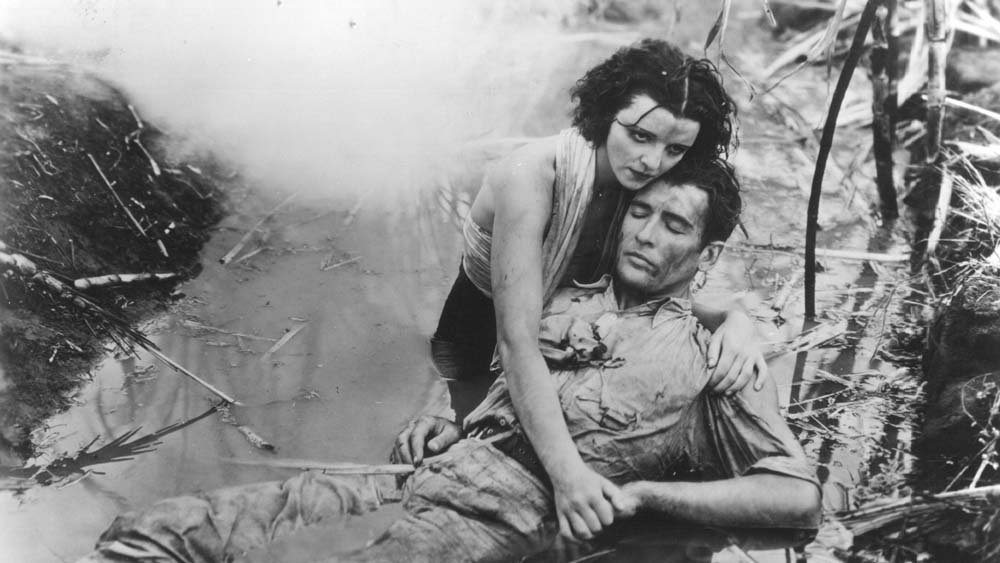
ND: What was it like directing, photographing, and then editing the film yourself?
AB-S: Keeping a conversation going while monitoring focus, exposure, and sound levels is chaotic! But in the end I appreciate a few things about this setup, whether [it was] initially intentional or not. Since it was just me filming, all the subjects are looking at the camera and the energy of our dynamic feels much more apparent. I also didn’t mind embracing the casualness of the setup, the handheld shots, great-uncle Henry putting the lav mic on former ILWU division director Alfredo himself. I decided to lean into those elements because there was no hiding them really. They aren’t looking off camera with a calculated shallow focus behind them and a boom operator standing over. It's a whole different feel that ultimately serves the spirit of the inquiry.
Editing-wise, this is where Henry influenced the project in yet another way. He was so animated and engaged, and I was really absorbed in his energy and felt the film should honor that, rather than maintain a detached distance. Since I had done historical research that involved his life directly we were able to develop a spirited rapport, and we often saw eye to eye politically. So much of tourism and state media is about lulling people into feeling that they’ve reached an equilibrium in Hawaiʻi through a natural market-driven process, but that’s completely ahistorical. Hawaiʻi was and is a nonstop struggle of “land and power” (to reference the [1990] George Cooper text), and Henry didn’t shy away from talking about it head on.
ND: Can you talk about the process of searching for Lois Weber’s Cane Fire? Do you think it could still be out there somewhere?
AB-S: Lois Weber’s White Heat, aka Cane Fire, from 1934 has long been identified as the first Hollywood production on Kauaʻi, but [it] being a lost film, there wasn’t much information beyond that. [There’s been] a recent increased interest in the director Lois Weber, [which] has made more details come out about the film, even since I was first researching [it] for the documentary, but [no one has been able] to uncover an actual print.
It was a good conversation starter because a lost film has an obvious allure. Bob Jasper, the tour guide of the defunct Coco Palms Hotel has also been searching [for the film] for several years. In fact, he came to a recent Kauaʻi screening and took me aside afterward and told me of a new lead—it was apparently shown at the 1934 Venice Biennale. Putting that out into the world just in case that leads somewhere!
Eventually I was doing enough research that the story around the circumstances of the film became more interesting than the film itself, and it was no longer necessary to find an actual copy. There’s actually no definitive proof that my great-grandfather was in the film. He never mentioned it to my grandfather before he moved back to the Philippines in the late ’60s. The entire shoot lasted only two weeks, mostly in the adjacent Waimea Plantation, but it was said that they visited other plantations to film coverage of workers in action. The film was shot around the daily operations of the plantations, and even the cane fire climax was filmed as part of the routine of burning the cane to better access the stalks afterward. Regardless, I thought it was an interesting starting point of both my family’s story and Hollywood’s relationship to Kauaʻi that would continue to play in parallel into the present day.
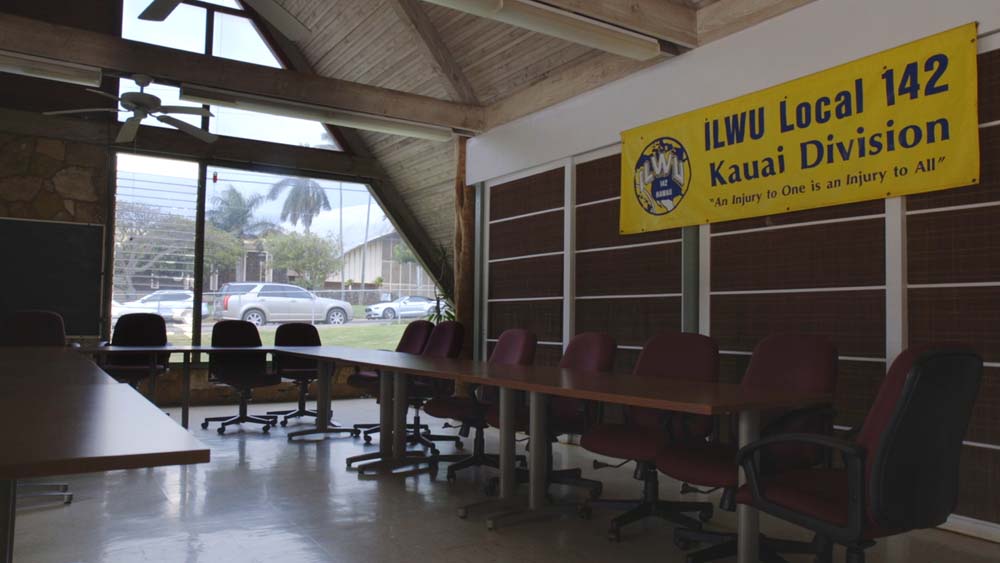
ND: The unvarnished glimpse of the tourism industry resonates on another level with the effects of the pandemic. The film’s release at this time feels even more poignant, at this moment of heightened labor activity and unionizing across industries. Was it challenging to find participants to speak on these issues for the film? What do you know about the pandemic’s impact on the already-fraught tourism and labor issues in Hawaiʻi?
AB-S: The last interview for the film was [conducted] in 2018 when there was less collective optimism about the resurgence of labor unions. It’s possible that it was less of a fraught topic than it might be now since management is more on the alert in general. It should also be noted that the majority of labor demonstrations happen on Oʻahu, where the main headquarters of all the major unions are located, as opposed to Kauaʻi.
When I interviewed Pamela Green, the then-current Kauaʻi ILWU division director, four years ago you can’t help but feel she has a bit of a defeated tone. That’s probably because outside of the film we were talking about the struggle for the $15 minimum wage as well as the “right to work” laws that were threatening teachers unions at the time. As of May 2022, the minimum wage is now $18/hour in Hawaiʻi, but [that] is obviously too low for the cost of living—too little too late for many.
The resurgence in union power is exciting to see, though I’m cautiously optimistic given that overall participation is still historically low. I had mentioned in another interview during the “Striketober” of 2021 [that] I saw a lot of parallels to when Hawaiʻi was emerging out of a one-year restriction on unionization after being under martial law post–Pearl Harbor. That’s when there was a record amount of participation in the ILWU and where it really took off. You see workers now being patronized as “essential” during the pandemic and told to just move forward and forced into harmful scenarios responding to a collective frustration.
I’m seeing yet another recent parallel in the ways that Starbucks and Amazon are battling the NLRB [National Labor Relations Board] in court. The Big Five sugar companies argued with the NLRB in court in a similar manner, and in their case it was a sign of them getting desperate and losing their grip of power as chronicled in Moon Kie-Jung’s Reworking Race: The Making of Hawaiʻi's Interracial Labor Movement [2006]. Let’s hope this is the same [kind of] case.
The pandemic’s impact is obviously ongoing, and so I hesitate to comment just yet. During the first nine months Hawaiʻi was under a lockdown that made it difficult for tourists to visit and as a result kept Covid cases relatively low. Hawaiʻi state was asking residents to make personal sacrifices for the good of public safety, avoid gathering, postpone weddings, hospital visits, funerals. But the state very cynically returned to full capacity tourism in November of 2020, overwhelming hospitals with Covid cases and preventing locals from accessing the hospital for other needs. As is always the case, visitors were prioritized first.
Just like many in the US saw this as an obvious opportunity to reform our healthcare [system], I think there was a hope that the state of Hawaiʻi would rethink their reliance on tourism, but it was revealed to residents of Hawaiʻi and the rest of the continent that there is no other vision that doesn’t incorporate perpetual profit regardless of the people or environment.
Cane Fire screens through May 26 at BAM. Director Anthony Banua-Simon will be in attendance tonight and tomorrow, May 20 and 21, for Q&As.
